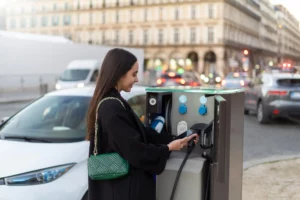
Home / EV Charging News / Comparing Level 2 and Level 3 Chargers
As electric vehicles (EVs) become increasingly popular, understanding the different types of EV chargers is essential for both consumers and businesses. Two common types of chargers are Level 2 and Level 3, each with its own set of advantages and considerations. This article compares Level 2 and Level 3 chargers, highlighting their key features, benefits, and ideal use cases to help you make an informed decision.
Level 2 chargers are widely used in residential, commercial, and public settings due to their balance of speed and convenience. They operate at 240 volts and typically deliver between 3.7 kW and 22 kW of power, allowing for a full charge in 4 to 8 hours, depending on the battery size and charger power.
Level 3 chargers, also known as DC fast chargers, offer significantly faster charging speeds than Level 2 chargers. They operate at 400 to 800 volts and can deliver power levels ranging from 50 kW to 350 kW, allowing EVs to charge up to 80% in as little as 20-30 minutes.
When considering the installation of Level 2 or Level 3 chargers, several factors must be taken into account, including initial costs, infrastructure requirements, and ongoing maintenance.
The charging speed and efficiency of Level 2 and Level 3 chargers are critical considerations for users, particularly in terms of how they meet daily driving needs and long-distance travel requirements.
Both Level 2 and Level 3 chargers play vital roles in the EV charging ecosystem, each offering unique benefits tailored to different needs and use cases. Level 2 chargers are cost-effective, ideal for overnight charging, and suitable for residential and workplace settings. In contrast, Level 3 chargers provide rapid charging solutions, essential for long trips and commercial operations, despite higher installation and operational costs. Understanding these differences will help EV owners, businesses, and policymakers make informed decisions to support the growing demand for electric vehicle infrastructure. As EV technology continues to evolve, the integration of both Level 2 and Level 3 chargers will be crucial in creating a comprehensive and efficient charging network.
